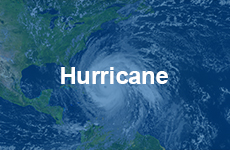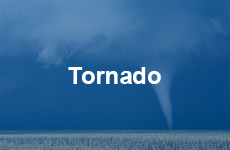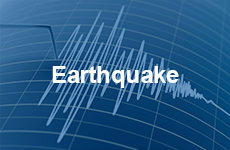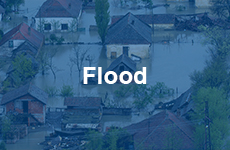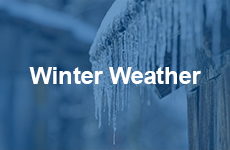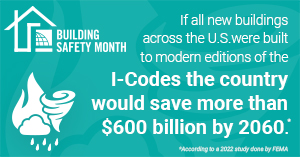
Understanding the Four Phases of Emergency Management
WEEK THREE // May 16–22, 2022
Week Sponsored by:
Understanding the Four Phases of Emergency Management
WEEK THREE //
May 16–22, 2022
Week Sponsored by:
Natural disasters are increasing in severity and frequency. Preparing for devastating events like hurricanes, floods, snowstorms, tornadoes, wildfires and earthquakes helps individuals and communities increase the health and safety of their population during a disaster, protects the local tax base, ensures continuity of essential services, and supports a faster recovery in the aftermath of a disaster.
Understanding the Four Phases of Emergency Management can help us better prepare for natural disasters.
- Phase 1: Disaster Mitigation
- Phase 2: Disaster Preparedness
- Phase 3: Disaster Response
- Phase 4: Recovery from a Disaster
Phase 1: Disaster Mitigation
Mitigation includes actions to prevent future emergencies or minimize their effects. For example, purchasing flood and fire insurance for your home is a mitigation activity. One of the best ways for individuals and communities to mitigate disasters is to build using the most up-to-date, modern building codes. The adoption, implementation and enforcement of building codes provides you, your family, and your community protection in the event of a natural disaster.
The National Institute of Building Science (NIBS) conducted a 2019 report, Natural Hazard Mitigation Saves, that represents the benefit-cost analysis of natural hazard mitigation with a goal to help initiate a greater mitigation dialogue. Up-to-date codes can save $11 for every $1 invested.
According to FEMA, only 25 percent of hazard-prone jurisdictions in the U.S. adopt the latest two editions of hazard-resistant building codes.
When communities adopt and enforce the latest codes, they are more likely to qualify for federal emergency management funding and for more post-disaster recovery assistance. Newly expanded FEMA grants in the U.S. fund code adoption, administration and enforcement pre- and post-disaster – providing new resources for U.S. communities to update or build out enforcement efforts.
FEMA's National Building Code Adoption Tracking Portal is a detailed interactive map that displays code adoption and code weakening information for jurisdictions at risk, across five hazards.
To learn more about building codes, check out:
- Introduction to Building Codes
- Building Codes: How They Help You
- Benefits of Building Permits
- FEMA's Building Codes Toolkit
- FEMA’s Building Science Resource Library
Phase 2: Disaster Preparedness
Making sure your family is prepared for any natural disaster is important. Your actions can ensure that no matter what Mother Nature brings, you, your family and your community will be more resilient. Below are some of the steps you can take to prepare your family and protect your home from natural disasters.
Protect Your Home or Business from a Disaster
The power of natural disasters can be overwhelming. While you can’t stop them from happening, there are steps you can take to increase your home’s chance of survival, even in the face of the worst that Mother Nature can dish out. Protecting your home can range from taking simple measures like protecting windows or elevating appliances, to more complete building retrofit measures. See Additional Information and Resources below for links to hazard-specific guidance on protecting your home.
Several lines of insurance are available to cover damage from various hazards. To learn more about protecting your home through insurance, see FLASH’s Homeowner’s Insurance Guide to Natural Disasters. Flood insurance can be the difference between recovering and being financially devastated. Just one inch of water in a home can cost more than $25,000 in damages.
You can also read the Code Council's Building Safety Journal article, "Above the flood: Protecting lives, homes and businesses from extreme flooding."
Prepare Your Family for a Disaster
- Determine your risk. Identifying and understanding possible hazards and emergencies is the first step in preparing for natural disasters. Visit Ready.gov to learn more about what you can do to prepare for different hazards that may affect you.
- View FEMA’s Taking Shelter from the Storm - Building or Installing a Safe Room for Your Home (fema.gov)
- Consider incorporating a safe room in building plans and improvements. A safe room is a hardened structure specifically designed to meet FEMA criteria and provide near-absolute protection in extreme weather events, including tornadoes and hurricanes.
- Learn how to Protect Your Home in a FLASH
- Sign up for your community’s warning system. The Emergency Alert System and National Oceanic and Atmospheric Administration Weather Radio also provide emergency alerts.
- Develop a family disaster plan that includes a list of food and water supplies needed for each member of your family and supplies for your pets. Make copies of important documents like insurance policies, the deed to your home, other personal papers, important phone numbers and a home inventory.
- Store important documents in a waterproof container and create password-protected digital copies.
- Review your evacuation route and emergency shelter locations with your family. Options for evacuation would include staying with friends and relatives, seeking commercial lodging or staying in a mass care facility operated by disaster relief groups in conjunction with local authorities.
- Taking shelter is critical in times of disaster. Sheltering in place is appropriate when conditions require that you seek protection in your home, place of employment or any other location where you are when disaster strikes.
- Review your plan regularly. If you make changes that affect the information in your disaster plan, update it immediately.
Phase 3: Disaster Response
Response activities occur during and in the immediate aftermath of a disaster. Response is putting your preparedness plans into action. For example, seeking shelter from a tornado or turning off gas valves following an earthquake are both response activities. Response focuses on saving lives and preventing further damage to property. Response activities may include immediate actions like search and rescue, medical care, firefighting, and sheltering.
When disaster strikes, like wildfire, it is essential to pay attention to emergency alerts and official announcements. If you cannot shelter in place, your local authorities will have information about public shelters. The Red Cross Emergency app will also have a list of Red Cross shelters in your area. If you are forced to evacuate, do not return home until authorities announce that it is safe to do so.
The Code Council has several resources available to help when disasters strike. In support of response and immediate recovery efforts, the Code Council and the National Council of Structural Engineers Associations (NCSEA) have joined forces to create the Disaster Response Alliance, a national, database of volunteers to assist local, state or federal entities that need skilled, trained and certified building safety professionals in the aftermath of a disaster.
Mutual aid agreements facilitate receiving help with building inspections when needed. FEMA P-2055 Post-disaster Building Safety Evaluation Guidance: Report on the Current State of Practice, including Recommendations Related to Structural and Nonstructural Safety and Habitability can also help. Find out more about your state's mutual aid laws at FEMA's Building Code Adoption Tracking page.
For general guidelines on helping others after a disaster, visit www.ready.gov/helping-others
Watch the video below as several experts share their experiences in the immediate aftermath of the Marshall Fire in Boulder, Colorado.
Phase 4: Recovery from a Disaster
Recovery includes actions taken to return to a normal or even safer situation following a disaster. In fact, studies show that enforcing local life safety codes decreases injuries and losses following disasters by up to 25 percent. Recovering from a disaster is a gradual process with safety being the main priority. It is important to know what assistance is available and how to access it. Taking the opportunity to update and rebuild using the most recent building codes is a worthwhile investment during recovery. Federal assistance includes FEMA Hazard Mitigation Assistance, Individual Assistance, and HUD Community Development Block Grants.
The Code Council in Action
- Check out FEMA's collection of building code documents, which provide guidance on the hazard-resistant provisions in the building codes for property owners, engineers, design professionals, building codes officials, and the general public.
- View the Code Council's PowerPoint presentation used for the Building Safety Month webinar "FEMA's New Building Code Strategy and Hazard Mitigation Programs that Support Community Resilience".
Check out our ICC Pulse Podcast episodes related to emergency management.
- The ICC Pulse Podcast: Episode 3 featured two guests from FEMA's Federal Insurance and Mitigation Administration to discuss emergency management
- In a special episode of the ICC Pulse Podcast, two structural engineers discussed the Searles Valley (Calif) Earthquakes and shared insight on seismic design provisions in the building code.
- In Episode 33 the ICC Pulse Podcast, Code Council VP of Government Relations Gabe Maser talks with FEMA Director of the Planning, Safety and Building Science Division Edward Laatsch about FEMA’s recent report, "Building Codes Save – A Nationwide Study of Loss Prevention."
The Code Council held a webinar on tornado awareness earlier this year, where panelists shared their experiences from a recent post-disaster assessment of storm damage in Kentucky and discussed the latest available research and wind science for tornadoes and what this means for building codes.
Additional Information and Resources


